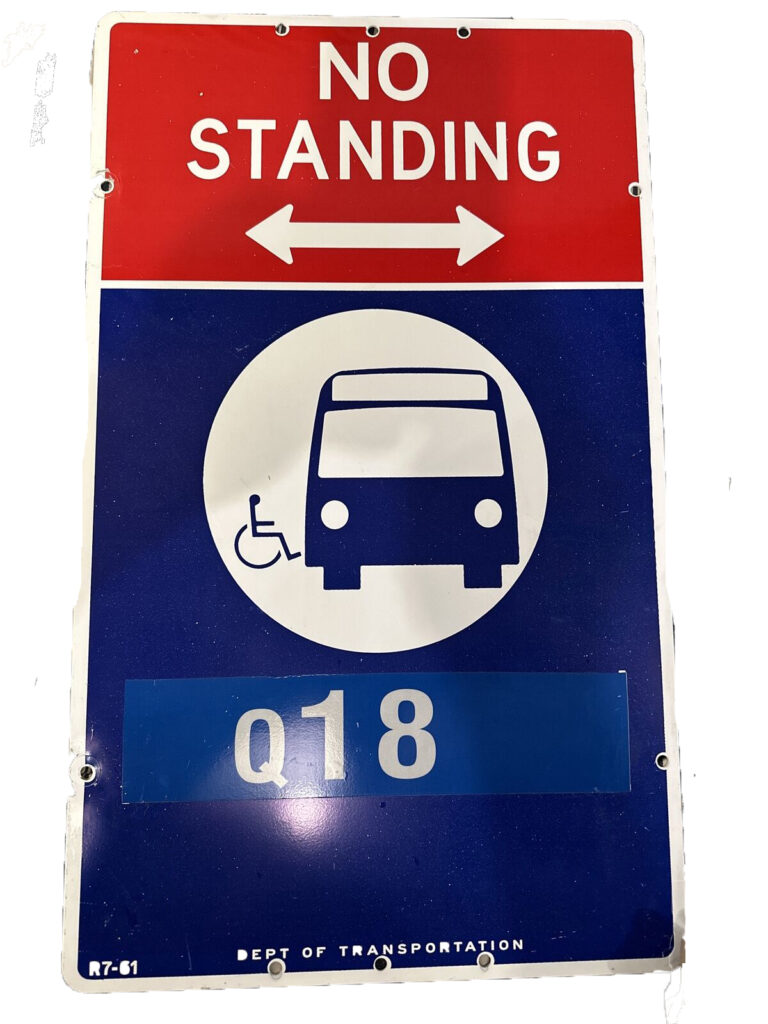Bus Stop Balancing is a mindless implementation of standard practices by the MTA and NYCDOT without the consideration of the effects of their actions.
There is no correlation between bus speed and passenger travel time. If a bus route has many bus stops but only stops at a few of them the elimination of bus stops has little, if any, effect on bus speed. Hence, there is little benefit to their elimination. Potential passengers, however, must walk further, on average, to reach a bus stop, increasing passenger travel time. This also significantly increases the chance of a missed connection. For infrequent service, a missed connection could also discourage bus usage. Increased walking distance to bus stops negatively impact the elderly and the permanently or temporarily infirmed, e.g., someone using crutches due to an injury. In fact, the only realistic benefit of the elimination of a bus stop would be the increase of the number of available parking spaces, assuming that there is no fire hydrant at the bus stop.
For proof that there is no correlation between bus stop balancing, bus speed, and service reliability, one can look no further than the city of Philadelphia.
The average distance between bus stops within this city is 500 feet. But in the Center City it’s as close as 450 feet. Though bus service reliability is just as bad as in New York City, at approximately 75%, weekday bus speed in Philadelphia is much faster. According to the Philadelphia Bus Network Choices Report, their bus service speed averages less than 12 mph, 40% faster than in New York City!
To determine where a bus stop should be located, one of the factors is topography. Pockets of New York City are known to be hilly. One example is the neighborhood of Highbridge, in the Bronx. The bus stops for the Bx11 and Bx13 in this neighborhood are well-utilized throughout the day.
A better example, in central Queens, is the Q18. When traveling northbound from its southern terminus, the Q18 has a bus stop on 65th Place at 53rd Avenue. The route then travels eastbound on 53rd Avenue. The next bus stop is at 68th Street, a distance of 550 feet. After that, it turns north onto 69th Street and stops at 52nd Drive; the previous bus stop was 600 feet away. If you look at a bus map, you wouldn’t know that 53rd Avenue has a steep rise at the western end. Hence the bus stop at 68th Street is well-utilized.
Bus speeds could be slow for many reasons. These include, but are not limited to, excessive double parking, blocked bus lanes, inadequate service levels causing excessive dwell time, and schedules that do not adequately reflect running times. It would be irresponsible and too simplistic to conclude that a bus route with very slow speeds and close stops should have some stops removed to speed service in the absence of analyzing other data.
What matters more than the number of bus stops or the distance between them are the volume of those stops, boarding and exiting, and the impacts, positive and negative, of a stop’s removal. Let us consider a bus stop with a combined total volume of 50 passengers boarding and exiting, and the bus route that utilizes the stop operates every five minutes for the four peak hours, every ten minutes for another eight hours, and every 20 minutes for the final four hours.
This means that 108 trips (48 + 48 + 12) would pass that bus stop at an average of more than two passengers per trip. The result would be an average of more than 25 trips, or more than one in four trips, that would stop at this stop. Therefore, a majority of trips would save no time if the stop would be eliminated.
And, if there are half-dozen adjacent lightly utilized bus stops, the elimination of some stops could result in a bus stopping at Stop A instead of Stop B, saving no travel time. The only meaningful effect of the elimination of the stop is that 50 passengers daily would now have a longer walk to or from a bus stop.
Bus stop balancing must always be analyzed on a case-by-case basis in order to increase bus speed without significant negative impacts on passenger travel time. Such analyses have to be based on a variety of factors, not exclusively bus stop usage. No formulas.
In conclusion, there must be a moratorium on the elimination of bus stops until fair and unbiased boroughwide studies are complete. Bus Stop Balancing has demonstrated that the MTA and NYCDOT are only concerned about bus speed, not passenger travel time. They are pretending that they will make “improvements” and “speed travel”. It is dishonest and wrong. They cannot be trusted.
David Kupferberg
VP Bus Advocacy, NYC, Passengers United
www.passengersunited.org




